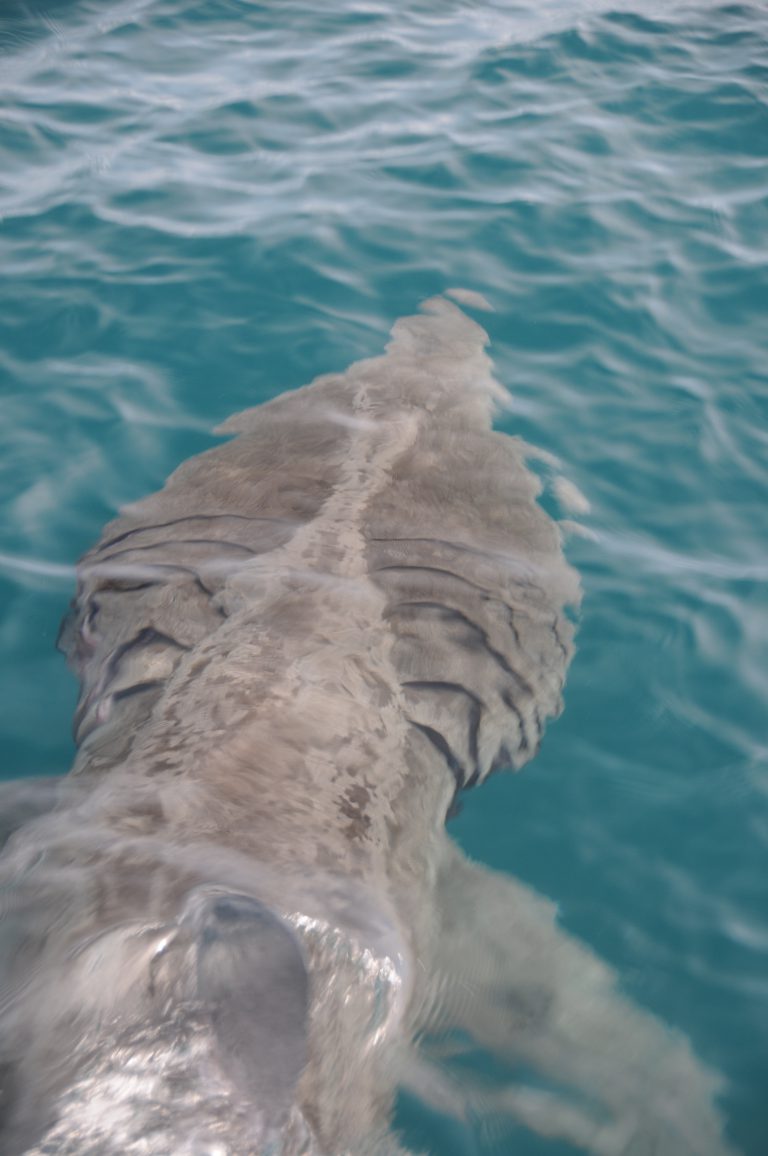
Scotland’s gentle giants
When fully grown, basking sharks can weigh up to four and a half tonnes and be 10 metres long, making them the second largest fish in the world, after the whale shark.
Rather than biting their prey, basking sharks filter zooplankton from the water as they swim, passing the equivalent of a 50m metre swimming pool through their gill rakers every hour.

Basking Shark
Cetorhinus maximus

Image: SNH
Conservation status: Vulnerable
Length: 11m
Weight: 7 tonnes
Gaelic: Cearban
Between May and October, basking sharks gather in high numbers at one of their global hotspots, around Coll, Tiree and Mull, regularly being seen in the Hope Spot.
Individual basking sharks can be identified by their distinctive dorsal fins. Some have been tagged and tracked during their migration away from Scotland, often travelling to the Canary Islands. One shark tagged in the UK crossed the Atlantic.
Basking sharks are a Scottish Government Priority Marine Feature which would benefit from the proposed Sea of the Hebrides MPA.
The International Union for the Conservation of Nature classes them as vulnerable, because their numbers are falling, making the time they spend off the west coast of Scotland even more important.
History
Basking sharks were hunted for their liver oil (squalane) which was used as an industrial lubricant and in lamp oils. Squalane is still used in cosmetics but basking shark hunting ended in Scotland in 1995.
Research
Very little is known about basking sharks. The University of Exeter has been studying them around Coll and Tiree, with SNH. You can find out more about these fascinating fish in this report on their work.
Threats
Threats to Basking sharks include marine litter, entanglement in fishing gear, pollution and boat strikes.
Get Involved
You can check out recent basking shark sightings on the Hebridean Whale and Dolphin Trusts online map.

